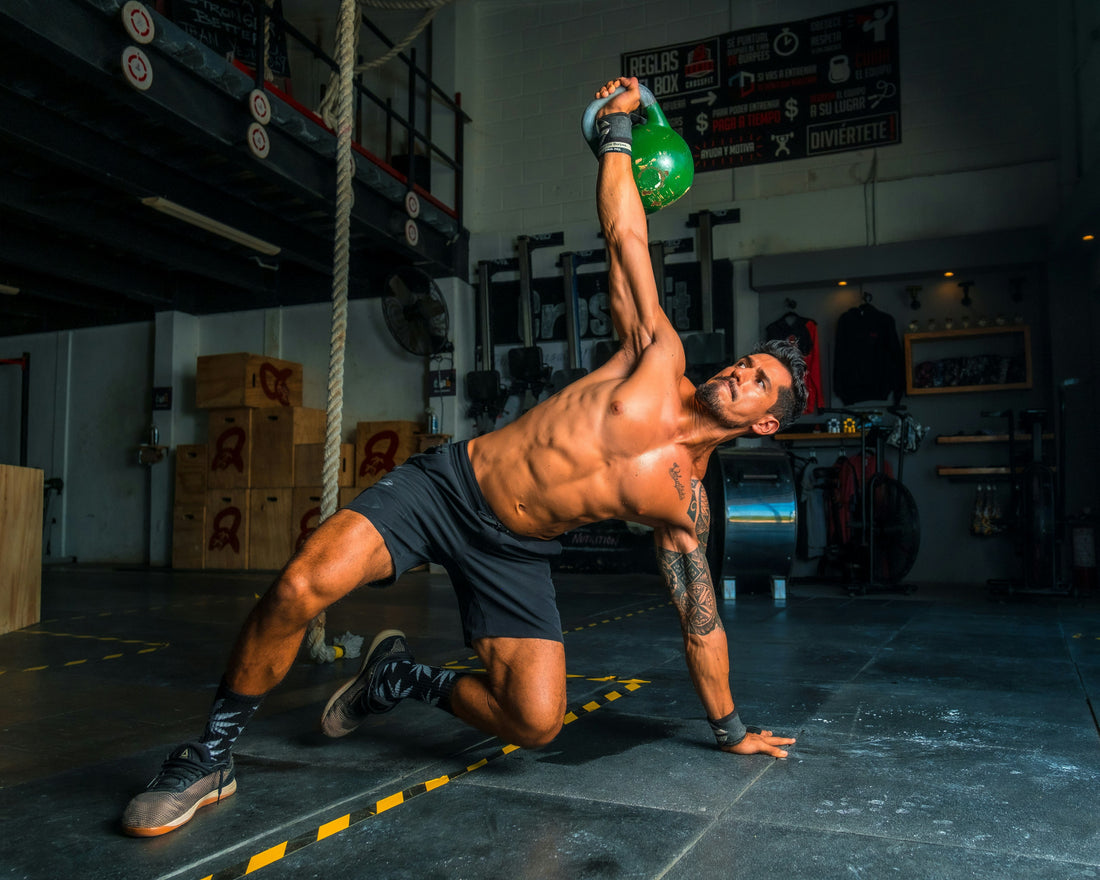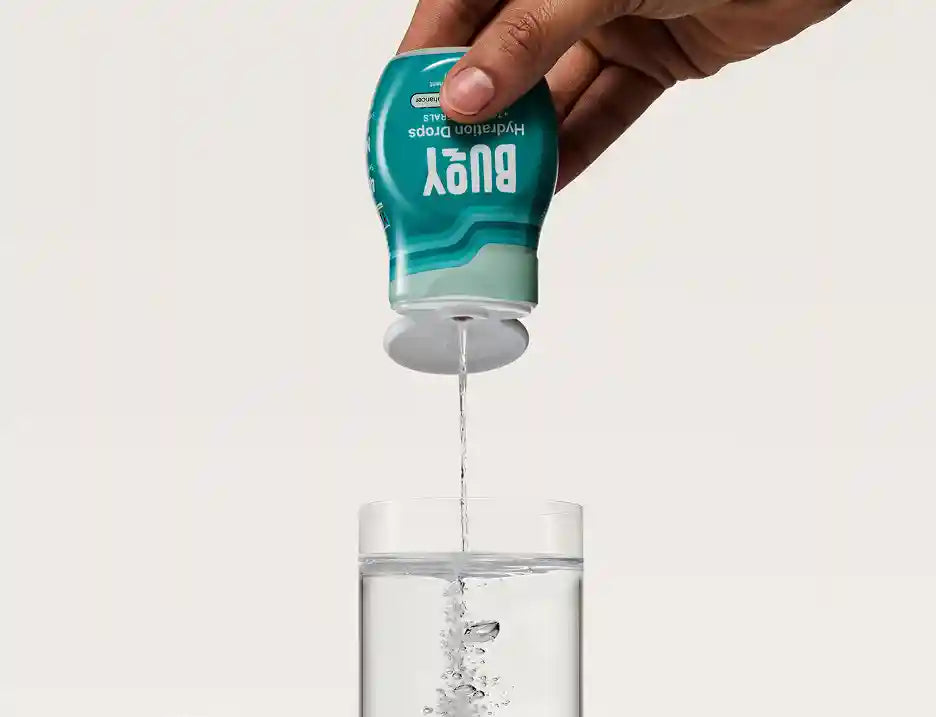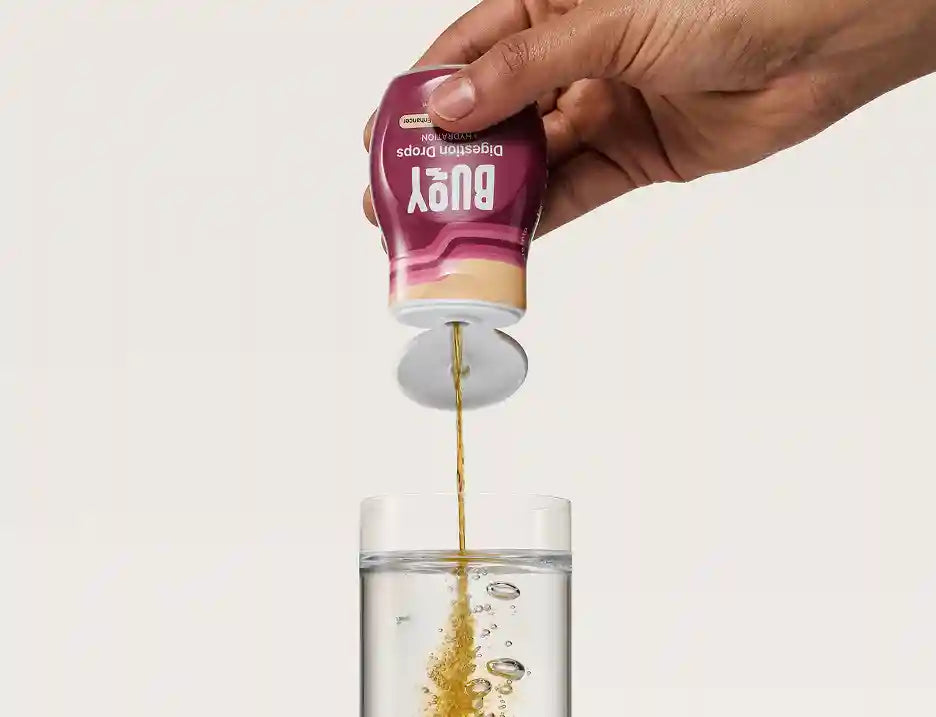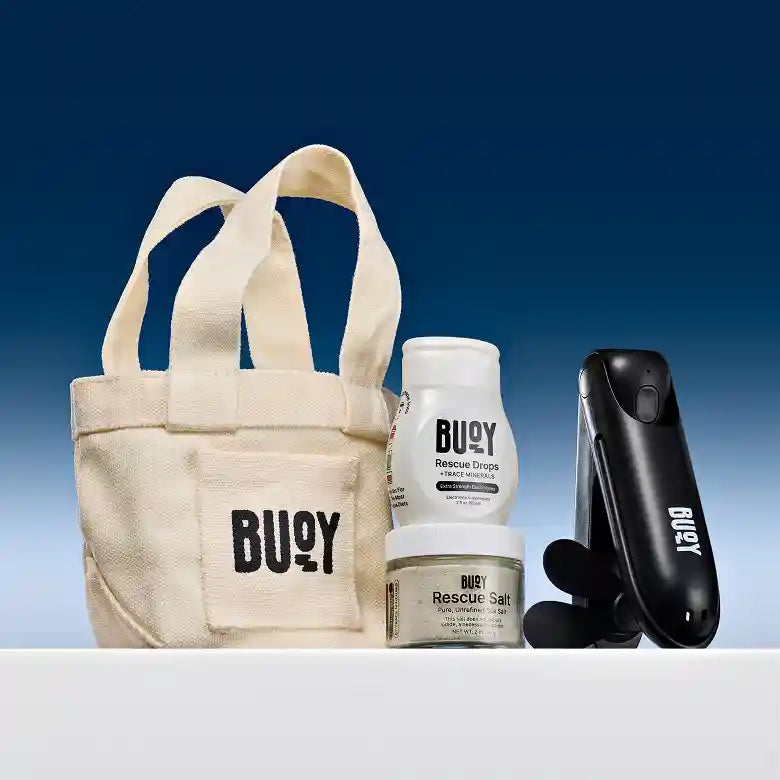
How Electrolytes Influence Athletic Performance and Recovery
Share
If you’ve ever hit a wall during a workout, cramped mid-run, or felt like you just couldn’t bounce back the next day, electrolytes might be part of the puzzle. These minerals help regulate nearly every function that matters when you’re exercising: hydration, energy use, muscle contraction, and recovery.
Essential Takeaways
- Electrolytes help regulate fluid balance, nerve function, and muscle contractions - critical components of athletic performance.
- An imbalance, even a mild one, can lead to fatigue, poor endurance, cramps, and slower recovery.
- Buoy’s Rescue Drops provide easy, on-the-go electrolyte replenishment without sugar, dyes, or artificial ingredients.
At Buoy, we’re not here to throw science jargon at you. We’re here to help you understand how your body works, and how you can feel your best while training, competing, or just staying active.
- What Electrolytes Actually Do During Exercise
- Signs Your Electrolyte Levels Might Be Off
- Hydration Alone Isn’t Enough
- Electrolytes and Endurance Training
- Everyday Athletes Need Electrolytes Too
- Practical Tips to Support Electrolyte Balance
- Building Consistency
What Electrolytes Actually Do During Exercise
Let’s break it down. Electrolytes like sodium, potassium, magnesium, and calcium keep your body’s systems in check. During exercise, you lose these minerals through sweat, especially sodium. When that happens, your muscles can’t contract properly, your nerves don’t fire as they should, and your body struggles to cool itself efficiently.
Sweating is your body’s natural cooling system. But when electrolytes are lost and not replaced, dehydration sets in, and performance starts to drop. Even mild dehydration - just 2% of your body weight - can impair endurance, strength, and reaction time.
Dr. John Stofan, a sports medicine physician, explains, “The right balance of electrolytes is essential for athletes. Dehydration and mineral loss affect not only performance but also increase the risk of injury.”
Signs Your Electrolyte Levels Might Be Off
Not everyone experiences a full-on cramp or blackout when they’re low on electrolytes. Sometimes it’s more subtle:
-
Fatigue that hits earlier than usual
-
Muscle twitching or weakness
-
Dizziness, even with water intake
-
Unquenchable thirst
- Headaches after working out
If you’re nodding to any of these, your electrolytes might need some attention.
Hydration Alone Isn’t Enough
Water is crucial, but plain water doesn’t replace the minerals you lose when you sweat. Drinking too much water without replacing electrolytes can even dilute sodium levels, in some cases leading to hyponatremia - a dangerous condition that’s been seen in marathon runners and endurance athletes.
We’ve built Buoy’s Rescue Drops to help people sidestep that issue. You can add them to water, juice, or whatever you’re drinking post-workout. They’re unflavored, so they won’t mess with your routine.

Endurance cyclist training uphill—electrolyte balance is essential for maintaining hydration, heart rate stability, and peak performance during long rides.
Electrolytes and Endurance Training
Long workouts demand more than just fuel. Electrolytes play a major role in:
-
Regulating your heart rate
-
Preventing overheating
-
Supporting blood flow and oxygen delivery to muscles
- Delaying the onset of fatigue
A 2020 review published in Nutrients found that endurance athletes who supplement with electrolytes experience improved time to exhaustion and better cardiovascular stability during prolonged activity.
Strength and Electrolyte Balance
Lifting weights or doing resistance training? Electrolytes matter here, too. Muscle contractions rely heavily on calcium and magnesium. Without enough, your muscles can feel sluggish or fail to activate properly.
It’s not just about strength output. It’s about control, timing, and avoiding injuries.
Recovery: Rebuilding After the Burn
Recovery isn’t just about protein and rest. Electrolytes speed up post-workout recovery by:
-
Helping muscles relax and repair
-
Replenishing hydration stores
- Reducing post-exercise fatigue
Magnesium, for instance, plays a key role in calming the nervous system and reducing inflammation. Potassium supports glycogen restoration (how your body stores energy in muscles).
Electrolytes help restore not just hydration, but the body’s baseline function after a hard session. Without them, recovery takes longer and performance in the next session suffers.
When You Need to Supplement
You don’t always need to reach for electrolytes after a short walk or light yoga. But if your sweat rate is high, your workout is intense, or the weather is hot, it’s smart to have a go-to plan.
Consider supplementation if:
-
You’re training longer than 60 minutes
-
You notice salt rings on clothing after sweating
- You get cramps or feel sluggish mid-workout
- You have a low-sodium diet
Buoy Rescue Drops: What Makes Them Different
There’s no shortage of electrolyte products out there. But many are loaded with sugar, flavouring, or artificial colours. Some are made for taste, not for real hydration.
We created Rescue Drops to deliver what your body actually needs:
-
A full-spectrum electrolyte blend (sodium, potassium, magnesium, chloride)
-
No sugar, no calories
-
No artificial ingredients
- Just clean, efficient hydration support
Add them to any beverage. Before, during, or after a workout. No fuss. Just replenishment that fits into real life.
Everyday Athletes Need Electrolytes Too
This isn’t just about elite athletes or marathon runners. Whether you’re cycling to work, doing a HIIT session, or walking in the heat, your electrolyte needs change with your activity.
Electrolyte imbalances don’t care about your fitness level. They show up when conditions are right. We’ve talked to everyday users who said they were surprised at how different they felt with consistent electrolyte use:
“I didn’t realise I was always mildly dehydrated. Adding Rescue Drops made my afternoon slumps disappear.”
“I train five times a week and always thought the fatigue was just part of it. Now I recover faster and feel more energised.”
Practical Tips to Support Electrolyte Balance
-
Track your sweat rate: Weigh yourself before and after a workout. For every pound lost, drink 16–24 oz of fluid.
-
Add Rescue Drops to your water: A quick, no-fuss way to replace electrolytes without the sugar crash.
-
Balance your meals: Include potassium-rich foods (like bananas, sweet potatoes), magnesium (leafy greens, nuts), and sodium (if not contraindicated by your doctor).
-
Hydrate before you're thirsty: Thirst is a lagging indicator. Start hydrating pre-workout, not midway through.
- Watch for signs of imbalance: Cramping, fatigue, dizziness, or salt cravings are early red flags.
Building Consistency
The real shift in performance and recovery doesn’t come from occasional fixes. It comes from consistently supporting your body, before, during, and after physical stress. That’s what Rescue Drops are for. They’re not just an emergency tool. They’re part of your daily system for feeling better and training smarter.
If you’re putting in the effort to move your body, we want to help you do it with fewer setbacks and more energy. Keep your electrolytes in check, and the rest of your wellness stack has a stronger foundation.
References:
-
Stofan JR, Zachwieja JJ, Horswill CA. Sweat and sodium losses in NCAA football players: a precursor to heat cramps? Int J Sport Nutr Exerc Metab. 2005.
-
Sawka MN, Burke LM, Eichner ER, et al. American College of Sports Medicine position stand. Exercise and fluid replacement. Med Sci Sports Exerc. 2007.
-
Hoffman JR, Maresh CM. Nutritional considerations for recovery. Strength Cond J. 2000.
-
Shirreffs SM, Maughan RJ. Rehydration and recovery of fluid balance after exercise. Sports Med. 1998.
- McDermott BP, et al. National Athletic Trainers’ Association position statement: fluid replacement for athletes. J Athl Train. 2017.




